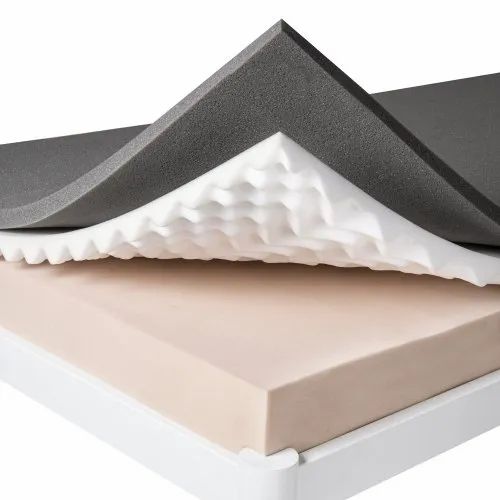Latex Talalay Mattress
The 1940s saw the development of Talalay Latex. Talalay Latex is produced by expanding the Dunlop procedure by vacuum-sealing the mould, freezing the latex, then baking it thereafter. As a result, latex foam is more uniform and lighter, making it perfect for usage in mattresses’ top layers or for people who prefer a softer, more cushioned sleeping surface. It is a terrific option for side sleepers as well because they offer excellent contouring, support, and can assist ease pressure spots. You’ll discover that mattresses frequently combine Talalay as the top layer with Dunlop as the foundation layer.

Why Latex Foam is Used in Mattresses:
1
Comfort: Latex foam is renowned for its durability and contouring qualities, which result in outstanding support and comfort. The latex mattress or pillow moulds to the contours of the body, supporting the hips, shoulders, and other pressure points to lessen pain and suffering.
Breathability: Latex foam is a breathable substance that allows air to freely circulate, which can assist regulate body temperature and minimise heat buildup. This is made possible by the material’s special pinhole architecture. People who tend to sleep hot or get night sweats may find this to be very helpful.
Durability: Latex foam is also a very resilient substance. Before it begins to deteriorate, it will keep its shape and stiffness for more than ten years. It can survive for twenty years with good maintenance! Due to its resistance to drooping, settling, and flattening, latex foam used in bedding items can last longer.
Due to its organic construction and lack of common allergies present in synthetic materials, latex foam is also hypoallergenic. Furthermore, Latex foam is inherently resistant to germs, dust mites, mould, mildew, rot, and other types of microorganisms that can make sensitive people develop allergic responses and asthmatic symptoms.
Mattress with Memory Foam
Memory foam, a polyurethane-based foam, is frequently combined with other materials to improve sleeping comfort. It is a fantastic alternative for individuals searching for a soft and pleasant sleep surface that relieves pressure on the joints because it is temperature sensitive, which means it can adapt to the shape of the body as it responds to heat and pressure. It can encourage better alignment of the spine and, as a result, lessen pain in the neck, back, and hips by distributing weight evenly and alleviating strain on specific body parts. Traditional, gel, and plant-based memory foam are the three types that are most commonly available on the market.
Traditional memory foam is created from a viscoelastic substance that reacts to body heat and pressure and is temperature-sensitive. For instance, a memory foam mattress softens and moulds to the contour of your body as you lie on it, spreading your weight evenly across the surface. Traditional memory foam has a number of advantages, including the ability to reduce pressure points, which can be very useful for people with injuries or chronic discomfort. Traditional memory foam, on the other hand, has a tendency to retain heat, which some people think makes it feel uncomfortable.
Additionally, because standard memory foam can take a few seconds to react to pressure changes, some people feel that it can be challenging to move around on it. Overall, standard memory foam can be a terrific option for people who need support and pressure relief, but it might not be the ideal option for people who tend to sleep hot or who prefer a more responsive surface. Because of this, gel memory foam is a well-liked substitute for regular memory foam.





